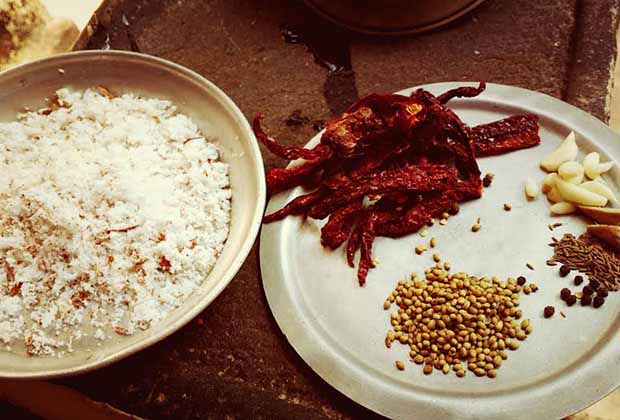How to cook like a Goan
- By Gia Claudette FernandesLoading...
- | 21 May 2015 2:29 PM IST
 X
X
 Goan kitchen essentials
Goan kitchen essentials
Thinking of replicating your favourite Goan dishes in your own kitchen but feel daunted at the task? Well, here’s a ready reckoner of pantry essentials to help you rustle up those delicious meals at whim.
Coconut palm vinegar: This is a vital ingredient in Goan Catholic cuisine. It’s made from the toddy (sap) that is extracted from the coconut tree.
It lends the distinctive tanginess to our meat and fish preparations, as well as pickles and preserves. It’s also the star ingredient in the fiery pork Vindalho and Sorpotel, as well as fish Rechado.
Coconut: The heart of Goan cooking across religious communities.
Yes, we love our coconut and we love it in anything and everything – in fish curries, vegetables, and even sweets. We mainly use fresh grated coconut and fresh coconut milk extract.
Coconut oil: This vital ingredient is making a comeback after years of receiving a bad rap for being considered unhealthy.
It lends a distinctive nutty flavour to Goan dishes and is wholesome and healthy as well.
Kokum: A popular souring agent in Goan cooking, kokum is the dried outer skin of the Garcinia Indica fruit.
Used mainly in fish curries and the refreshing Sol Kadi (an appetiser made with fresh coconut milk).
Tamarind: Another tangy ingredient in Goan cooking, tamarind is widely used in meat and fish preparations. In fact, it’s been in use long before the Portuguese brought tomatoes to our shores.
Tephal or tirphal: A variety of the Sichuan pepper, these dried berries have a distinctive citrusy flavour and are used mainly in our fish curries, especially mackerel fish curry.
Chillies & Spices: The popular varieties used are red Kashmiri and Bedgi chillies, and they feature in most if not all dishes.
We also use other Indian spices such as dry coriander and cumin seeds, black peppercorns, cinnamon, cloves, bay leaves, cardamom, and so on.
Boiled rice: This is the red parboiled rice similar to the one available in Kerala. We eat it along with our curries and it’s also used to make kanji (rice gruel), sannas and some sweets.
Coconut palm jaggery: This rich dark-coloured coconut palm jaggery has a near caramel like flavour and is widely used in most Goan sweets such as dodol, patoleo, alle balle, and so on.
Dried/salted fish & meats: Come summer and most Goan grannies can be found preparing ahead for the monsoon, when fish and vegetables are in short supply.
So you will find kitchens being stocked with salted pork and dried fish such as mackerels and Bombay Ducks.
Sausages: Definitely the darling of Goans and non-Goans alike.
The addition of these unique tangy and hot pork sausages (called choris) takes any dish up several notches. Can be used to make sausage chilly fry, sausage pulao, feijoada (Goan rendition of pork and beans), and even stuffed breads.
Photo credit: Gia Claudette Fernandes
Gia’s love for cooking goes back to idyllic summer vacations as a child, when she watched in fascination as her paternal grandmother plucked chickens, fried fish, stuffed sausages, pounded spices, and stirred huge cauldrons of aromatic curries over wood fires in their family home in Goa. She promises to decode the vast repertoire of Goan cuisine and culture for you, from revisiting popular favourites to unveiling the lesser-known gems.
Follow Gia on Instagram



